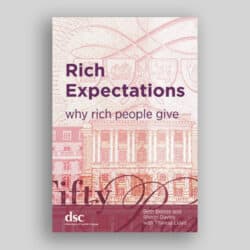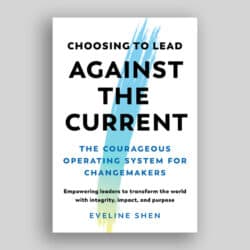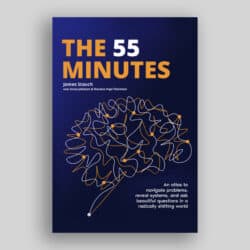In this optimistic new book, Dimple Abichandani writes that philanthropy’s purpose must evolve from “gilding – lightly covering up systemic challenges – to alchemy – investing in a true transformation of these systems,” offering some practical ideas for how foundations can rethink their practice.
A New Era of Philanthropy: Ten Practices to Transform Wealth into a More Just and Sustainable Future, by Dimple Abichandani. North Atlantic Books, Berkeley, California; 187 pp; ISBN 979 888 984 1388
In an era that feels overwhelmed by turmoil, it is hard to think that hope and excitement are still possible. Or to believe that work toward greater justice and more sustainability will continue to advance. Reading this optimistic new book by Dimple Abichandani provides an antidote of sorts to that feeling of negativity. It also provides some practical ideas for staff and board members of foundations that could generate creativity and positive alignment around their work and practice.
Abichandani is a former family foundation leader whose grantmaking interests and philosophy of philanthropy focus on social change and social justice. She has also served on the steering committee of the Trust-Based Philanthropy Project and as a fellow of the National Center for Family Philanthropy. She is experienced in the dynamics of managing a family foundation with a relatively small staff. She is also bold in her thinking. As this first book from her demonstrates, she is keenly committed to the view that “philanthropy’s purpose is not to maintain or grow resources, but to transform wealth into justice, freedom and repair.”
Abichandani is keenly committed to the view that ‘philanthropy’s purpose is not to maintain or grow resources, but to transform wealth into justice, freedom and repair.’
Writing in an engagingly personal style, Abichandani articulates a way of thinking about the role of philanthropy that is shared by the rising generation of foundation leaders (including both staff and board members). One doesn’t need to be committed to social justice work to feel the urgency of the times. The work of philanthropy, in the minds and words of many active in the field of foundations today, is to act for change, to take a position on the inequalities and structural barriers to flourishing in our society and economy. This may be interpreted as taking a political stance. And it can become so. But the economic, social and environmental pressures on so many communities today transcend politics. Regardless of ideology, people are feeling a lack of access to opportunity and are wishing for greater voice. Abichandani takes this as an imperative for philanthropy to be a transforming agent, using a medieval metaphor for transforming base metal into gold through alchemy. In her words, philanthropy must evolve its purpose from “gilding – lightly covering up systemic challenges – to alchemy – investing in a true transformation of these systems . . . The ‘gold’ we seek to create is a fair economy that works for all communities, a planet that can sustain generations to come, the repair of generations of harm and the cultivation of a multiracial democracy where communities can shape the decisions that impact them.”
This is an ambitious vision for what philanthropy can do, given the risk-averse stance of most foundations and their often-repeated view that their resources are limited, certainly not of a size to be “transformational.” However, Abichandani rightly points to the fact that philanthropy’s resources are not defined only by financial capital. She believes that “true durable impact doesn’t come from a check; it comes from an ever-evolving mix of relationships, resources, imagination, trust and solidarity.” Most of these assets are based on or derive from human capital. Strategies that hope to be transformational in impact must begin here, with the people who create the strategies and take the actions. But finding the right mix of leadership, skills, culture, and practice is difficult for any organization. It is even harder to change the mix when it is already in place. This is where Abichandani puts her focus, by providing advice that helps people working in or with foundations to rethink their practice, whether it be governance, planning, or operations.
True durable impact doesn’t come from a check; it comes from an ever-evolving mix of relationships, resources, imagination, trust and solidarity.
Dimple Abichandani
The relatively short book is structured in 10 chapters, each of which discusses an area of practice and concludes with a suggested exercise or “practice prompt.” While Abichandani is clearly most interested in moving foundations toward what she views as a “new era” of transformational philanthropy, the practices that she discusses are not dependent on an a prioricommitment to become transformational. As she admits realistically, referencing her “imperfect” yoga practice, “on the mat, I have learned that the big changes we seek (like a handstand!) come about by the small consistent steps we take.” Changes can be made incrementally and not all at once. If they are undertaken with imagination and experimentation, in a spirit of reflection and questioning, with honesty, and with collective purpose, Abichandani would argue that the direction will be fruitful and that foundation teams can move toward a practice that is more mindful and, perhaps, more transformational in impact.
Readers may read sequentially, which will give them a full idea of Abichandani’s scope, or dip into the chapters selectively depending on their context. I would begin, as she does, with the practices of narrative and history, both personal and institutional, that shape beliefs about the roles and fields of action for philanthropy. These are fundamental to the evolution of values, and to the setting of aspirations. Examining our assumptions is the first step toward change. In a group setting, whether board or staff team, this is an essential preliminary to durable agreement on a change in strategic direction. But it is also valuable as an exploration of one’s own even unconscious thoughts about the role and possibilities of philanthropy.
In the next chapters, Abichandani reflects on some of the common practices such as governance, the deployment of financial assets, and rethinking strategy and evaluation. She also introduces new-generation thinking on such practices as the use of time in foundations, embodying (or “feeling”) philanthropy, funding holistically across issues, funding the polycrisis, and funding together (with colleagues, other funders, or community members). She has an original take on each of these areas of practice, oriented toward doing things differently and ultimately geared toward engaging in a practice that is more transformative in her sense. In each case, she is asking people to expand their thinking, and to use their imagination and creativity to reassess how they approach their work. Her suggested “practice prompts” raise provocative questions and make use of creativity tools that would be valuable exercises for any foundation team.
Abichandani’s suggested ‘practice prompts’ raise provocative questions and make use of creativity tools that would be valuable exercises for any foundation team.
Essentially, Abichandani concludes, foundations have no choice but to rethink their practices because the world is already changing around them. The “new era” for philanthropy is already here as we witness the economic, ecological, and social transitions that the world is undergoing. Change in philanthropy must come from the ground up, foundation by foundation, from program officers, grant managers, trustees and foundation leaders, and finally grant seekers themselves. To make this change, as she puts it, “we must imagine new stories, embrace proximate and accountable governance, leave behind relics of practice that speak to bygone eras, and adopt strategy and evaluation approaches that are emergent and values-aligned.” Abichandani is candid that she looks to a future in which institutional philanthropy as it is practised today has become an “artifact.” She is idealistic in her hope that foundation philanthropy can, in effect, put itself out of business by achieving her goals of a more just and more durable world. One might be skeptical that this will ever be the case but nevertheless willing to re-examine and evolve through practice. Dimple Abichandani has done us a service by providing us with a practical and hopeful map to improving philanthropic practice, with fresh thinking and approaches better suited to an era of transformation.


